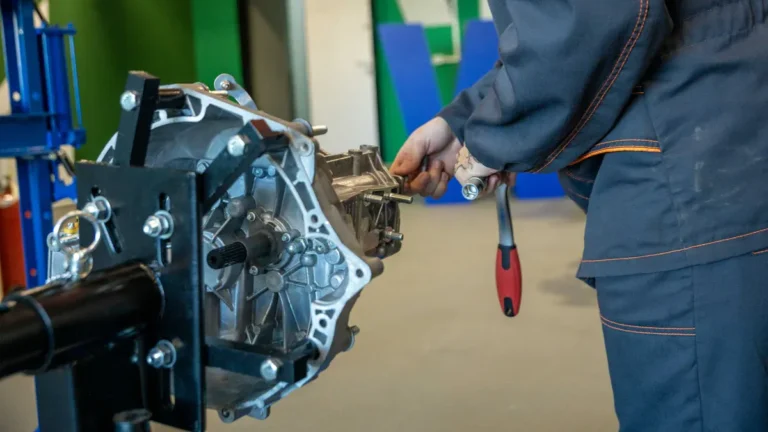Most hybrid cars are designed to keep running even though their battery starts to fail, but this comes with big changes in how the car feels and behaves. As the hybrid battery is weak, the gasoline engine takes over more often, which means less silent electric driving and more engine noise. Sometimes, drivers notice a drop in fuel economy, slower acceleration, or the car might even go into limp mode to protect itself, limiting speed and power. Flashing warning lights on the dashboard are a clear sign to check for battery trouble, and ignoring them can lead to even more expensive repairs later. While the car usually stays on the road, a failing hybrid battery changes the way it moves, and the comfort and efficiency drivers expect begin to fade. Getting the battery checked promptly helps avoid bigger headaches, keeps the ride smooth, and protects the car’s value.
How Hybrid Cars Operate Without a Functional Battery
In case a hybrid car’s battery stops functioning properly, the vehicle often continues to operate but in a noticeably different way. The internal combustion engine (ICE) compensates through running more frequently and harder, which reduces fuel efficiency and smooth power delivery.
Some models might enter a “limp mode” to limit power output, protecting the system but impacting performance. Emergency startups without battery assistance can be challenging, as the hybrid system relies on stored electrical energy to support engine functions and electric motor engagement.
Additionally, towing procedures require special care because traditional towing can damage the hybrid system when the battery is not operational. In short, while the car might still run, the hybrid battery failure substantially alters how the vehicle operates and demands mindful handling in emergencies.
Key Functions and Importance of the Hybrid Battery
The hybrid battery plays a crucial role through storing energy captured from regenerative braking and the engine, then supplying electricity to the electric motor during acceleration or low-speed driving.
This support allows the vehicle to run more efficiently, reducing fuel consumption and enabling smooth shifts between electric and gasoline power.
Without this energy storage and motor assist, the internal combustion engine must work harder, which lowers performance and fuel economy while changing the driving experience noticeably.
Battery Energy Storage
Storing energy effectively plays a central role in how hybrid batteries improve a vehicle’s performance and fuel efficiency. These batteries capture energy from regenerative braking and engine operation, then release it during acceleration or low-speed driving to assist the gasoline engine. This continuous energy flow supports electric-only driving modes and boosts fuel economy, while also powering essential systems like engine start and power steering.
The battery’s design—composed of multiple cells separated via polymer films—ensures safety and durability over a typical lifespan of 8 to 10 years. As their capacity declines, second life applications and recycling strategies become vital, allowing batteries to be repurposed or recycled, reducing environmental impact and resource waste, while extending their usefulness beyond automotive service. This seamless energy storage and release is fundamental to hybrid vehicle efficiency and reliability.
Electric Motor Support
Hybrid vehicles rely on their battery to give the electric motor the assistance it needs for smooth, powerful driving. The battery supplies energy captured through regenerative braking and engine power, allowing the electric motor to reduce strain on the internal combustion engine.
This system depends heavily on sophisticated inverter design, which converts stored DC power to AC for the electric motor, and advanced control algorithms that manage power flow efficiently.
If the battery weakens, the electric motor’s support diminishes, causing the engine to work harder and reducing fuel economy. Symptoms include erratic battery state-of-charge readings, diminished acceleration, and increased engine operation. These signs reflect that the battery’s ability to deliver consistent electric motor support is compromised, impacting both vehicle performance and driving comfort.
Recognizing Signs and Symptoms of a Failing Hybrid Battery
What does it feel like once a hybrid car’s battery starts to give up? Drivers could notice sluggish acceleration, reduced fuel economy, and more frequent engine operation. Visual inspections can reveal warning lights on the dashboard, while sound anomalies like buzzing or clicking can point to battery trouble. The car could struggle to hold a charge, and the battery gauge can behave erratically. These changes signal the battery is weakening and needs attention.
| Symptom | Cause | What to Watch For |
|---|---|---|
| Poor fuel economy | Battery can’t assist engine | More frequent gas stops |
| Erratic battery gauge | Cell imbalance or degradation | Sudden drops or jumps in charge |
| Warning lights | System detects battery fault | Check hybrid or battery symbols |
| Unusual noises | Cooling fans or cell issues | Buzzing, clicking, or whining |
Effects of Hybrid Battery Failure on Vehicle Performance and Safety
If a hybrid battery fails, the car’s engine has to work much harder, making the ride feel sluggish and less responsive.
Drivers may notice the car shifting into a safety mode that limits power to keep things safe, which can mean slower acceleration and a less smooth drive.
These changes happen because the battery can’t help the engine like it should, so the car tries to protect itself while still letting you get where you need to go.
Reduced Engine Performance
In case the hybrid battery starts to fail, the car’s engine will have to work much harder to keep things running, which can make driving feel sluggish and less smooth. This happens because the internal combustion engine (ICE) faces intake restriction and altered spark timing as it strains to compensate for the lost electric motor support.
The reduced energy from the battery means the engine cannot rely on electric assist for acceleration, causing lag and hesitation. Engine load increases, and fuel consumption rises since the ICE operates more frequently and intensely.
Drivers may also experience uneven power delivery and delays in acceleration responsiveness. These combined effects diminish general driving refinement, creating jerky shifts between power sources and activating safety modes to limit engine stress, all signaling compromised hybrid system performance.
Safety Mode Activation
Although hybrid vehicles are designed to blend electric and gasoline power smoothly, the failure of the hybrid battery often triggers the car to enter a protective safety mode. This mode activates emergency protocols to prevent further damage and keep the driver safe.
The car could limit acceleration, reduce engine power, or restrict certain functions to avoid overheating or electrical issues. Drivers could notice the vehicle feels sluggish, and some features could shut down unexpectedly.
Override procedures are rarely available to the average driver, as these systems are tightly controlled through the car’s computer. While this can be frustrating, it’s meant to protect both the car and its occupants.
The car will still run, but performance will be limited until the battery is repaired or replaced.
Repair, Replacement Costs, and Warranty Considerations for Hybrid Batteries
Because hybrid car batteries are not built to last forever, owners should understand what it means once these batteries begin to falter, especially while considering repair costs, replacement options, and what warranties actually cover.
Hybrid battery replacement costs typically range from $2,000 to $8,000, varying with the make and battery size.
Warranties generally cover about eight years or 100,000 miles, which helps relieve some financial burden.
However, once out of warranty, owners face choices such as:
- Opting for a costly OEM replacement.
- Considering more affordable aftermarket options.
- Pursuing professional battery repair in case only certain cells fail.
- Engaging in responsible battery recycling to handle environmental concerns.
Making informed, timely decisions here can prevent unexpected breakdowns and costly repairs while preserving vehicle longevity and ecological responsibility.
Impact of Battery Issues on Driving Experience and Maintenance Practices
If hybrid battery issues arise, they reshape the entire driving experience, shifting the car’s behavior in ways that could feel unusual or frustrating to the driver. Drivers often notice increased engine noise and vibration as the internal combustion engine (ICE) compensates for the battery’s reduced power, leading to less smooth acceleration and responsiveness. This can complicate roadtrip planning since fuel consumption rises and the vehicle’s ability to perform electric-assist functions diminishes. Parking strategies may also shift, as extended inactivity drains the hybrid battery, requiring periodic engine running or professional advice to maintain battery health. Safety features could activate limp mode, limiting acceleration to protect the drivetrain. Proactive maintenance and timely repairs are critical to avoid unexpected breakdowns and maintain a smooth driving experience.
| Impact Aspect | Cause | Driver’s Experience |
|---|---|---|
| Increased ICE Usage | Battery power loss | Louder engine, more fuel consumed |
| Erratic Battery Charge | Cell degradation or imbalance | Fluctuating dashboard charge readings |
| Safety Restrictions | Limp mode activation for protection | Reduced acceleration, limited power output |



